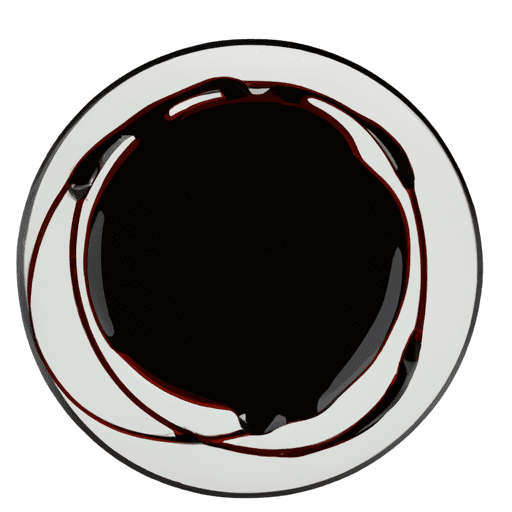The Sweet and Tangy Elixir: Balsamic Glaze
When it comes to enhancing the flavors of dishes and adding a touch of elegance, balsamic glaze is truly unparalleled. This luscious, syrupy delight is a kitchen staple that can transform an ordinary meal into an extraordinary culinary experience. Join us as we uncover the mouthwatering world of balsamic glaze, exploring its taste, common uses in cooking, nutritional value, and even some intriguing history and facts.
Taste Sensation
Balsamic glaze entices the taste buds with its unique combination of sweetness and tanginess. Its rich, velvety texture envelops the palate, while the understated acidity offers a delightful balance. The deep, dark brown hue hints at the complex blend of flavors, featuring notes of tartness, fruitiness, and a subtle hint of woody undertones. One can truly appreciate the harmonious symphony of tastes that balsamic glaze imparts in every bite.
Versatility in the Kitchen
The versatility of balsamic glaze knows no bounds. Its ability to enhance an extensive range of dishes is what makes it a favorite among chefs and home cooks alike. Let’s delve into some of the most popular culinary applications:
1. Salad Dressings and Marinades
Balsamic glaze adds a burst of flavor to fresh salads, elevating them from ordinary to extraordinary. Whether drizzled over crisp greens or used as a base for a homemade vinaigrette, its sweet and tangy profile brings vibrancy to even the simplest of salads. Additionally, this glaze is an excellent marinade for both meat and vegetables, infusing them with a depth of flavor that tantalizes the taste buds.
2. Glazes for Roasts and Grilled Fare
Balsamic glaze shines as a glaze for roasts and grilled dishes, turning them into gourmet creations. Brushed onto meats such as beef, pork, or chicken before cooking, it creates a delectably caramelized exterior while imparting a tantalizingly sweet and tangy essence. This glaze can also be used as a finishing touch, adding a glossy sheen and intensified flavor to grilled vegetables.
3. Accompaniment for Cheese and Fruit
The marriage of balsamic glaze and cheese or fruit is a match made in culinary heaven. Drizzled over creamy cheeses like mozzarella or burrata, it provides a sweet counterbalance to their rich and savory profiles. When paired with ripe strawberries, figs, or even watermelon, balsamic glaze elevates the natural sweetness of the fruit, creating a delectable contrast that is sure to impress any palate.
Nutritional Value
While balsamic glaze is undoubtedly a taste sensation, it also offers some nutritional benefits. It is naturally low in calories and fat, making it a guilt-free option for those watching their intake. Balsamic glaze contains antioxidants and polyphenols, which have been linked to various health benefits, including reducing inflammation and promoting heart health. However, it’s important to consume balsamic glaze in moderation due to its naturally occurring sugars.
History and Fun Facts
The origins of balsamic glaze can be traced back to Italy, where it has been produced in the region of Modena for centuries. Traditional balsamic vinegar, from which the glaze is derived, is made from cooked grape juice, aged and fermented in barrels made of different woods for a minimum of 12 years. This slow and meticulous aging process contributes to the glaze’s unparalleled depth of flavor and complexity.
Interestingly, true balsamic vinegar is so highly prized that it is protected by the European Union’s Protected Designation of Origin (PDO) status, ensuring its authenticity and quality. The creation of balsamic glaze was a way to make the exceptional taste of traditional balsamic vinegar more accessible for everyday cooking.
In Conclusion
Balsamic glaze is a culinary superstar that brings both elegance and flavor to the table. Its sweet and tangy taste, versatility in the kitchen, and nutritional value make it a must-have ingredient for any food enthusiast. From salads to roasts, cheese plates to fruit platters, balsamic glaze has cemented its position as a beloved condiment, elevating dishes to new heights. So, next time you’re looking to add a touch of sophistication to your culinary creations, reach for a bottle of balsamic glaze and let your taste buds embark on a journey of pure delight.
Interesting Facts about Balsamic Glaze:
Origin: Balsamic glaze, also known as balsamic reduction, originated in Italy. It is a thick and syrupy sauce obtained by cooking down balsamic vinegar until it has reduced and thickened.
Common Uses: Balsamic glaze is commonly used as a condiment or a flavor enhancer in various dishes. It adds a sweet and tangy flavor to both savory and sweet dishes. Some popular uses include drizzling it over salads, grilled vegetables, roasted meats, and fresh fruit. It is also often used in marinades, sauces, and glazes.
Nutritional Benefits: Balsamic glaze is made from balsamic vinegar, which is known for its potential health benefits. Balsamic vinegar contains antioxidants that may help protect against cell damage. It also has anti-inflammatory properties and may aid digestion. However, it is important to note that balsamic glaze is often consumed in small amounts due to its high sugar content, so its nutritional benefits should be considered in moderation.
Unique Properties: Balsamic glaze has a sweet and complex flavor profile with notes of traditional balsamic vinegar. It has a thick and syrupy consistency, making it ideal for drizzling or glazing. Balsamic glaze can add a rich and glossy finish to dishes, enhancing their visual appeal.
Historical Significance: Balsamic vinegar has a long history dating back to ancient Romans, who used it as a medicinal elixir. Over the centuries, balsamic vinegar production techniques have evolved, and traditional methods include a lengthy aging process in different types of wooden barrels. Balsamic glaze is a more recent culinary adaptation, popularized as a convenient and versatile way to enjoy the flavors of traditional balsamic vinegar.




Use the share button below if you liked it.
It makes me smile, when I see it.